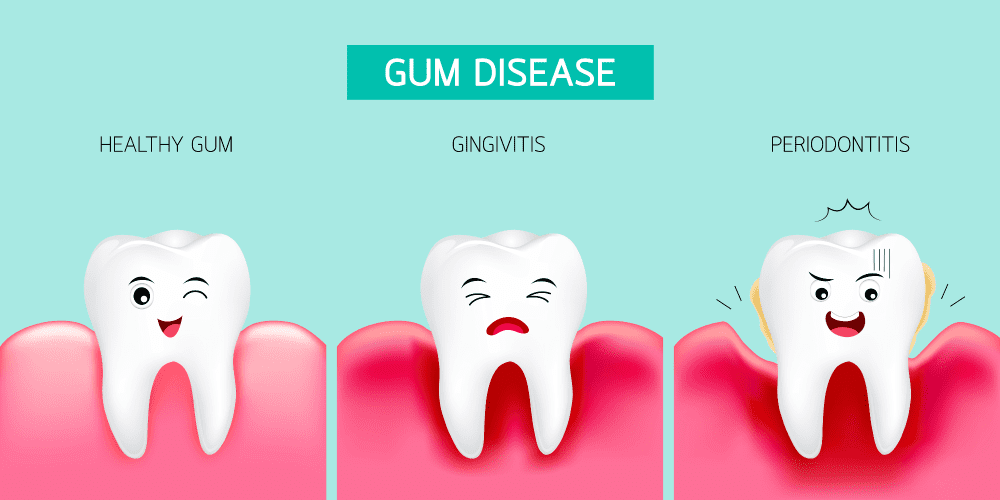Gum Disease
What is it?
Gum Diseases also referred to as periodontal diseases is a condition whereby the gums become inflamed, resulting in redness and swelling of the gum portion around the teeth. Gums may then bleed easily and the support system that holds the teeth into the bone may be compromised, eventually leading to more severe infections and teeth loss.
Say NO to bleeding gums
is the slogan for Gum Health Day, promoted by the Australian Dental Association and European Federation of Periodontology to raise awareness of Gum Disease.
What causes Gum Disease?
Plaque
Gum disease is caused by plaque, a sticky and fury coat of bacteria that forms constantly over the teeth. When plaque is left on the teeth for too long, the immune system launches an inflammation response, releasing substances to try and eliminate the plaque. This action ultimately leads to swelling and bleeding gums, tell-tale signs of early stages of gum disease.
Given more time, the gums will eventually pull away from the teeth and form pockets that allow even more collection of bacteria – the cycle becomes vicious and can cause irreversible damage to the mouth.
Plaque that is not removed and left over a long time also hardens into “calculus”, calculus can form around the gum line and under the gum itself and this can contribute and worsen gum disease.
Common signs of Gum Disease
Symptoms of Gum Disease include:
- Gums that bleed easily when brushing or eating
- Gums that have shrunk or pulled away from the teeth
- Puffy, red and swollen gums
- Bad breath
- Appearance of abscesses and pus around the gums
- Loose teeth
- Change in bite and teeth alignment
- Visibly thick build up of plaque and/or calculus around the teeth
- Sensitive teeth
- Spaces forming between teeth
- Bad taste in your mouth
The 2 stages of Gum Disease & Other Health Implications
Stage 1 - Gingivitis
The early stage
Gingivitis is the early stage of Gum Disease and it is when the inflammation stops at the surface layer of the gum where it meets the teeth. Though the gums are often bleeding and puffy, the damage caused to the area can be reversed with good oral hygiene and regular dental check up and clean at the dentist.
Stage 2 - Periodontitis
The later stage
When the gingivitis is not treated then the inflammation becomes more severe. The gum loses its strength and ability to seal itself from the plaque, this allows pockets to form in the gum and bacteria multiplies and dig deeper into the anchorage points of where the teeth are held into the bone. The ligaments, tissue and bone are severely destroyed, and the damage can no longer be reversed. The ability of the teeth to be maintained for a long time is jeopardised with patients often having to lose their teeth.

Other Health Implications
In more recent times, many research studies have repeatedly shown that Gum Disease can be associated with other medical conditions. There are connections of Gum Disease to heart disease, stroke, respiratory diseases and diabetes. It is important to remember that caring for your teeth daily and professionally is more than just keeping your mouth healthy, they are important steps in caring for your overall well being.
Prevention
You can do the following to prevent Gum Disease:
- Regular professional cleaning at the Dentist every 6 months
- Brush your teeth and gums at least twice a day
- Clean in between your teeth daily with the use of floss, interdental brushes or any other tools recommended by our dentist
- Use a good toothbrush and a fluoridated toothpaste
- Clean any oral appliances that go into your mouth daily, for example: dentures, retainers, aligners
- Quit smoking or chewing of tobacco, tobacco products highly increases the risk of developing gum disease
- Maintain healthy lifestyle and diet
- For people with diabetes, keep blood sugar levels well controlled
If you have symptoms of Gum Disease or you would like to make an appointment for your regular check up and clean, please make a booking online or call us on (03) 9748 7271


